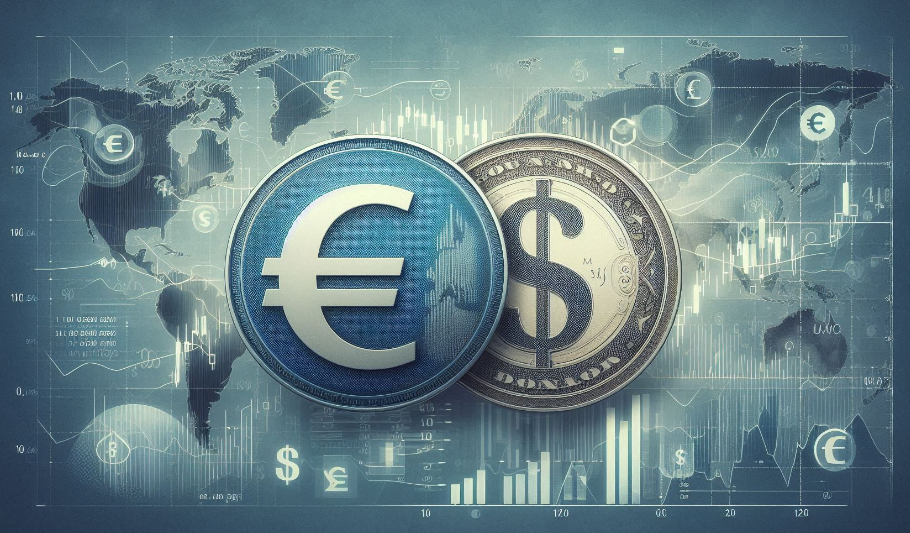
EUR/USD Exchange Rate: Current Overview
The EUR/USD exchange rate is one of the most traded pairs globally, and it remains in the spotlight due to its sensitivity to economic data and geopolitical events. Recently, the EUR/USD has hovered around the 1.05 to 1.07 range, experiencing fluctuations in response to multiple factors. For instance, the pair initially rose following weaker-than-expected U.S. economic data, hinting at a potential dovish shift in the Federal Reserve’s stance. However, the European Central Bank’s (ECB) own concerns about economic stagnation in the Eurozone also play a significant role in capping upward momentum.
Key Drivers of EUR/USD Today
U.S. Dollar Strength and Fed Policy: The strength of the U.S. dollar often weighs heavily on the EUR/USD. Recently, the dollar’s value has been bolstered by the Fed’s continued emphasis on managing inflation, maintaining relatively high-interest rates. This strong dollar makes the euro less attractive, resulting in downward pressure on the EUR/USD pair. If the Fed signals a shift toward lower rates, the pair may experience some relief.
ECB’s Inflation and Growth Concerns: ECB policymakers are cautious about high inflation across the Eurozone, which affects the euro’s purchasing power and attractiveness in foreign exchange markets. The ECB has implemented rate hikes, but these measures have yet to generate significant growth. Recent ECB statements also underscore that high inflation could persist longer than anticipated, which may drive further policy adjustments.
Geopolitical and Market Events: The ongoing situation in Ukraine and trade tensions can destabilize investor sentiment, prompting a flight to the safe-haven U.S. dollar. Additionally, European economic health is directly tied to the stability of energy supplies and trade conditions. Market uncertainties keep investors wary, influencing fluctuations in the EUR/USD exchange rate.
Technical Analysis
Technical indicators show mixed signals for the EUR/USD pair. As of now, the 50-day and 100-day moving averages are slightly bearish, reflecting pressure on the euro to break above resistance levels around 1.08. A break above this level could open paths to 1.10, while downside support at 1.05 remains a critical threshold. Analysts highlight that an acceptance above 1.08 is essential for a bullish continuation. Recent relative strength index (RSI) readings suggest an oversold euro, which could lead to a short-term rally, though fundamental factors must align to sustain it.
Short-Term Outlook and Forecast
In the near term, the EUR/USD may continue to face headwinds if U.S. economic indicators remain strong, driving Fed policy toward a tighter stance. Conversely, any indications from the ECB on stabilizing Eurozone growth or easing inflation could provide support for the euro, potentially pushing the pair towards the 1.08-1.10 range. However, given current global conditions and the strength of the U.S. dollar, a sustained bullish trend in the EUR/USD is uncertain.
Conclusion
The EUR/USD exchange rate remains sensitive to a complex array of influences, from central bank policies to global economic shifts. For traders and investors, keeping a close eye on economic indicators, ECB and Fed actions, and geopolitical developments is crucial for understanding and anticipating movements in this highly traded pair.